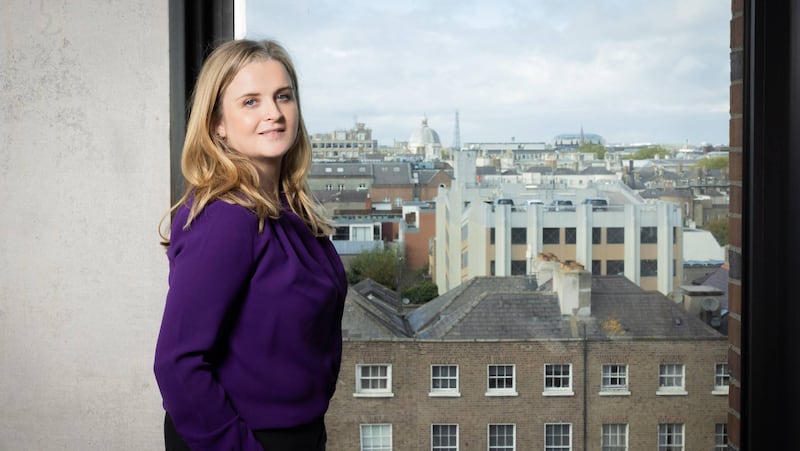As Ireland’s pivot from fossil fuels accelerates, and the development of wind and solar energy increases, one additional ingredient in the renewable energy mix is powering into the spotlight: green hydrogen, an environmentally friendly fuel source.
“Green hydrogen offers a way of storing energy for those times when the wind doesn’t blow and the sun doesn’t shine,” explains ESB’s policy manager Catherine Joyce-O’Caollaí.
“In terms of the benefits it can bring us it’s not only the zero emissions, which is obviously the key benefit, it’s also the energy security – currently Ireland imports close to 80 per cent of its energy needs. In fact, the Climate Change Advisory Council have said that [in 2022] Ireland spent over €1 million every hour, which amounts to €8.7 billion annually, on importing fossil fuels such as oil and gas.”
But what is it?
Put simply, green hydrogen is produced by passing electricity from renewable sources through water. The electricity splits the water (H2O) into its constituent parts, hydrogen (H2) and oxygen (O2).
READ MORE
Green hydrogen can be stored in large quantities and used as a carbon-free fuel for electricity generation plants, for those times when energy from other renewable sources is low.
Powering ahead
Last year ESB invested more than €500 million in renewable energy infrastructure, to support its target of 5GW of renewable generation by 2030 and its net zero by 2040 strategy. Building infrastructure to create and store green hydrogen is a key part of this.
It was ESB’s commitment to decarbonisation that prompted Joyce-O’Caollaí to join the company in October 2022.
“I was at a conference in 2022 where our chief executive Paddy Hayes spoke about ESB’s net zero transition by 2040 and its trajectory to get there,” she says. “To me it was quite inspiring to have a company CEO stand up and set out clear milestones for reaching net zero.”
Personal commitment
Joyce-O’Caollaí had started out in her career nearly two decades earlier. Having studied history and politics at university, followed by EU politics in Edinburgh, the Dubliner began her working life as a trainee with the European Parliament. She then spent time as a research assistant in the UK’s House of Commons before moving home to Dublin to work for an employers’ organisation.
Her interest in energy policy grew as her career developed. “As soon as I got a sense of the possibilities within the energy sector I wanted to stay in it,” she says.
Joyce-O’Caollaí spent eight years building her career, becoming a senior energy policy executive, before moving to a waste-to-energy company as corporate affairs manager. It’s a role she held for six years until she joined ESB in October 2022.
“At the time only a very limited amount of hydrogen was being used in Ireland but ESB was already talking about how it was going to feature in its net zero transition, and I had the skill set and expertise around how policy was developing in this space,” she explains.
Putting green hydrogen to work
Green hydrogen has enormous applications, far beyond powering electricity generation.
“We see green hydrogen being used in those parts of the economy, of society, that are hard to electrify,” she points out. “The bottom line is that if you can electrify something, you should electrify it, because that’s the most efficient use of energy. But where it is not yet possible or viable to do that, green hydrogen has an important role to play. It could be, for example, for back up electricity generation at a music festival that would previously have used diesel generators.”

The energy system of the future will feature the use of green hydrogen in zero-carbon power stations to back up renewables.
“We call these ‘dispatchable plants’, because we switch them on when we need them, depending on what’s happening with our weather-based renewables. We see running them on green hydrogen as a key part of ensuring Ireland has a resilient energy system. After all, as our society becomes more dependent on electricity due increased levels of electrification, we need to ensure we have that back up,” she says.
Green hydrogen also has applications for heavy transport, including shipping and aviation.
Strong ambitions
It’s why Ireland now has strong ambitions for green hydrogen, tied to its enormous offshore wind potential.
“Green hydrogen complements offshore wind‚” explains Joyce-O’Caollaí. “You can produce green hydrogen via directly-connected offshore renewables, or from grid-connected renewables at times of high output, as a way to store that energy. With the right accompanying storage infrastructure, green hydrogen can bring energy security.”
The production of green hydrogen isn’t going to be confined to any one specific region either, she adds: “It will follow where wind energy develops, which then becomes a regional benefit, because industries will see the benefits of developing in proximity to it.”
While Ireland’s primary focus is on its domestic usage, once the country’s needs are met, green hydrogen could have export potential too, she points out.
Of course, green hydrogen is “not a panacea” for all our future energy needs, she says, but it is an important part of the jigsaw: “For me it’s about the unique role it can play in security and providing resilience to our energy system.”
To read more about ESB’s renewable energy plans, visit esb.ie













